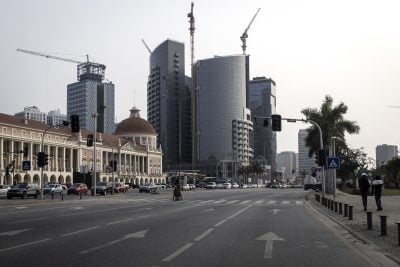With the no resolution to the euro crisis in sight, a faltering US economy and – most significant of all for the sector – anxieties regarding Chinese growth, the challenges facing miners have become more complex and extreme.
Even under normal circumstances, when compared with their peers in other sectors, mining executives have unenviable difficulties. The demand for the commodities they produce – and thus their sector’s success – is very closely correlated with the ebbs and flows with the global economy as a whole, over which they have no control.
In the meantime they must ensure a pipeline of projects in the right places, in the right resources, and raise vast sums of capital up-front to finance them. Then they must cross their fingers and hope that there will be sufficient demand for what they have chosen to produce when a given project comes online several years down the road – and stays online for perhaps 25 years.
No wonder then that the number-one concern of industry leaders remains ‘resource nationalism’, as it was last year. Governments quite rightly wish to ensure they maximise their share of the spoils. But their tendency of late to use instruments aside from taxation, such as beneficiation requirements (obligating companies to treat ore locally rather than simply exporting them by bulk, as has been proposed in South Africa and Zimbabwe), export levies, restrictions on foreign ownership and windfall taxes are the sector’s bête noire.
Legislation
For instance, in South Africa the ANC’s State Intervention in the Minerals Sector (SIMS) report, makes provision for increased taxation, discusses the regulation of ‘strategic minerals’ in relation to their beneficiation, exportation and sale. Seizing a greater share of the value chain makes sense for the country but challenges miners’ existing business models. Implemented in the wrong way, it could also damage investment flows.
SIMS does, however, reiterate that whole-scale nationalisation is not being proposed. Although nationalisation is permitted under the constitution, it would not be possible legally without full compensation at the market price.
Given that the estimated cost to the South African government of taking a 51% controlling stake (as opposed to complete nationalisation) in the mining sector as a whole would be R500bn ($58bn) – more than half the entire annual state budget – it simply is not feasible.
However, governments across Africa, whilst avoiding nationalisation, are reviewing, or have reviewed, governance of the sector and require equity shares in projects as a condition of licensing. Currently Black Economic Empowerment legislation in South Africa requires 26% participation, whereas Zimbabwe’s more aggressive indigenisation scheme requires 51% participation.
Somewhere in between is Guinea’s widely praised new mining code, which grants the government a 35% stake with the right to purchase further equity. Both Guinea and Zambia have taken the opportunity to increase royalties, and tax changes have also been proposed in the Democratic Republic of Congo (DRC) and Ghana.
The uncertainty that results from the risk of such changes hampers miners’ plans, delaying or deferring projects and perhaps even resulting in the cancelling of proposed investments, if they are rendered uneconomic by legislation.
Feeding the uncertainty this year are the 13 general or Presidential elections due in sub-Saharan African countries, including in Guinea, Ghana, Zambia and Zimbabwe – the latter nation also facing potential upheaval in the event of 88-year-old President Mugabe’s demise. There remain wild-card risks too, such as the upheaval in Côte d’Ivoire in 2010 or Mali this year.
As a result of this trend towards ‘resource nationalism’, the industry is being forced to address its ‘social licence to operate’ and responsibility to ‘share the benefits’. In other words, to engage in a socially responsible and environmentally sustainable manner with host nations, to ensure that the legal regime neither gives away a country’s mineral endowment nor throttles the possibility of having a thriving mining sector.
Because prices have risen significantly over the course of the ‘supercycle’ (aside from a blip at the height of the financial crisis) stakeholders have understandably been keen to benefit. Where companies are unable to reach mutually satisfactory accommodations with stakeholders, there is the risk of disruptive action by states, workers (as recent events in South Africa amply demonstrate), interruption to supplies and shareholder activism.
Emphasising the mining industry’s equal responsibility for building superior compacts between stakeholders, Mines Minister Susan Shabangu recently said that “this is a country which has a history of mining and it’s not a good history because it’s a history of mining which never cared. And that history has to be changed. Any individual who wants to come into this space and invest has to come with a different mindset.”
Plus ça change…
According to Ernst & Young’s latest review of global industry leaders’ opinions – their Business Risks Facing Mining & Metals 2012–2013 report – the nature of the challenges to the sector remain largely unchanged year on year. However, these challenges have increased in their intensity. Global growth is still sclerotic. The IMF, in its latest World Economic Outlook, lowered its forecast for global growth in 2013 from 3.9% to 3.6%. However, with China consuming between a quarter and a half of most metals, this is the key market. Although slower EU and US growth means less demand for Chinese goods, and for the commodities to make them, the Middle Kingdom is muddling through so far.
Growth estimates for China were revised down slightly to 7.8% for this year and 8.2% for next year. Despite this revision, the IMF remains sanguine about the resilience of the Chinese economy. Other economists are more pessimistic however.
The continuing hiatus as regards an entrenched economic recovery, with several major trading powers slipping back into recession, has affected prices – another reason why life is harder now than a year ago. Iron ore prices for instance, which had been stable, moved from annually benchmarked prices to spot prices and rose precipitously to $190/t. They have since fallen back to $90/t and are currently trading around the $120/t mark, having rallied this week.
This is one of the reasons that Vale has discreetly announced it is putting on hold its activities at the $1.3bn Zogota mine, in the vast Simandou iron ore deposit in Guinea, that had been due to open this year. The other reason is that the $2.5bn investment in the concession was made under the now vanquished military junta in April 2010 and so there are considerable ambiguities for the company and new government to clarify before the company spends any more than the estimated $500m already spent on the up-to $10bn of investment the project as a whole will need.
Not only are prices in the sector lower but costs are accelerating – ‘cost inflation’ rose from 8th to 4th place on the Ernst & Young Risk Radar. Labour, energy, declining ore grades, appreciating local currencies (against the US dollar), supplier constraints and taxes are all increasing pressure on operators to divest or mothball high cost or under performing assets and consolidate core assets.
For example, the Kibali gold project in the DRC, a joint venture between AngloGold Ashanti and Randgold Resources has seen budgeted total capital expenditure rise 55% from $1.4bn (projected in 2010) to $2.2bn today.
This combination of lower prices and rising costs will naturally have a deleterious effect on investment. Research from Citigroup estimates that spending will rise 13% this year, a significant fall from the 34% previously predicted, and will actually fall in 2013.
Additionally law firm Webber Wentzel has warned that the South African government’s planned withdrawal from existing Bilateral Investment Treaties (BITs) with the EU, currently set to expire on 13th March 2013, will also adversely affect the country’s investment climate. BITs are agreements setting out reciprocal obligations on investor’s between signatory nations. The absence of such arrangements will remove certain protections against potential resource nationalism moves by the state – aggravating existing industry concerns. Furthermore, the second biggest problem on E&Y’s list is the shortage of skilled labour, which remains a persistent and serious problem, particularly in Mozambique.
Infrastructure
Then, in third place, there is the continuing and increasingly problematic infrastructural deficit. The problem of ‘infrastructure access’ is a consequence of the fact that rising prices have increased the quantity of mineral reserves, that is mineral resources whose exploitation is economically viable.
However, the problem of creating the prerequisite infrastructure to capitalise on these opportunities is restricting development. Cash-strapped governments are less able to assist with providing appropriate infrastructure and so solutions must be found via third party state investment or privately, via sovereign wealth funds or pension or other funds.
For instance, developing the other half of the Simandou iron ore concession is a consortium formed by Chalco and Rio Tinto. The companies are taking responsibility for required infrastructure, a 900km railway to the coast and a deep-sea port which will take costs to $10bn. This will take five years or so and means the project will be unlikely to be cash-flow positive for a decade – although the very high-grade ore deposit could become extremely profitable after this point.
Although this northern route option is preferred by the government, there is a southern route option via Liberia under consideration too. All arrangements of this kind have implications in terms of commercial risk as well as complicating the resolution of these infrastructural deficits caused by state inaction.
The sector faces this plethora of growing challenges that will require deft, wise and lucky management to navigate successfully. As Jay Patel of Ernst & Young observes, “Current global issues will fuel uncertainty and therefore volatility. Successful miners will be those that recognise and exploit value from volatility.”
Want to continue reading? Subscribe today.
You've read all your free articles for this month! Subscribe now to enjoy full access to our content.
Digital Monthly
£8.00 / month
Receive full unlimited access to our articles, opinions, podcasts and more.
Digital Yearly
£70.00 / year
Our best value offer - save £26 and gain access to all of our digital content for an entire year!

 Sign in with Google
Sign in with Google 




